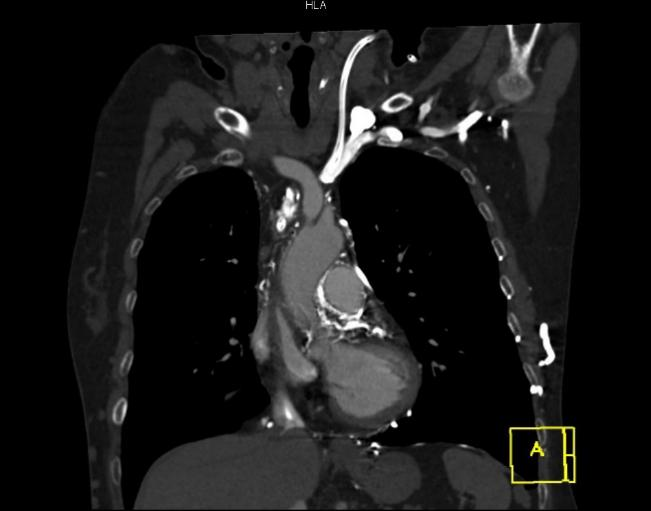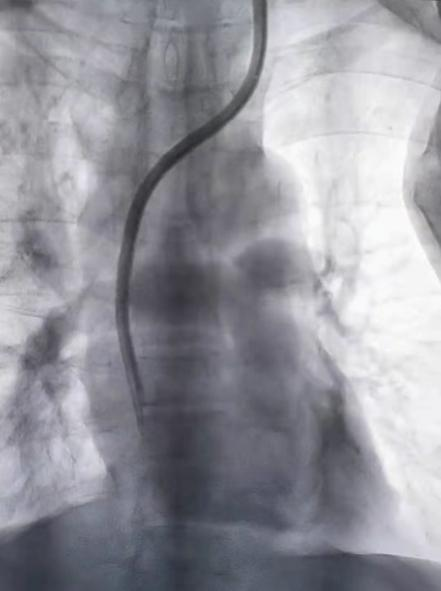Recently, Dr. Cui Tianlei with WCH’s Department of Nephrology, along with his renal interventional therapy team, performed “the Surgery of Opening Superior Vena Cava with the Assistance of Snap Sheath Technology Combined with Impact Method” for a 69-year-old female patient, who was discharged smoothly five days after operation. The literature retrieval indicated that there has been no similar surgical case reported in China as of now.
The female elderly patient received hemodialysis for 11 years. Last year, she suffered from dialysis vascular access dysfunction repeatedly, and the treatment after being transferred to another hospital proved unsatisfactory. After being admitted into WCH, she received an examination, showing that she suffered from superior vena cava stenosis with thrombosis, right brachiocephalic vein occlusion, azygos vein compensation with thrombosis, and bilateral common iliac vein occlusion (Fig. 1). As a uremic patient, the vascular access problem should be urgently solved; however, she was exposed to high difficulty and high risks in operation due to the exhaustion of her systemic vascular access.

Fig. 1 Three-dimensional reconstruction of thoracic vessels before operation suggests superior vena cava occlusion
On March 25, Professor Cui Tianlei’s team, supported by the medical staff in the interventional operating room, creatively adopted the snap sheath technology in combination with the impact method to open the occluded left innominate vein and superior vena cava, successfully implanting the central venous catheter with polyester sleeve. Postoperative angiography showed that the blood vessel was opened satisfactorily (Fig. 2). The operation lasted only one and a half hours. After the operation, the patient was sent back to the ward, and the catheter was normally used for hemodialysis the next day. The patient was discharged smoothly on the fifth day after the operation.

Fig. 2 The blood vessel is opened satisfactorily during the operation
Vascular access is regarded as “the lifeline” of hemodialysis patients. With the growing number of long-term hemodialysis patients in China, the number of patients with vascular access disorders, especially those with vena cava diseases, has increased rapidly. In this case, the patient suffered from multiple vascular access failures. Such a problem posed a huge threat to the patient. Professor Cui Tianlei’s team has been committed to solving the difficult access problems of hemodialysis patients all the year round. At present, it has solved the “lifeline” problem of hemodialysis for thousands of patients with its state-of-the-art technology.

